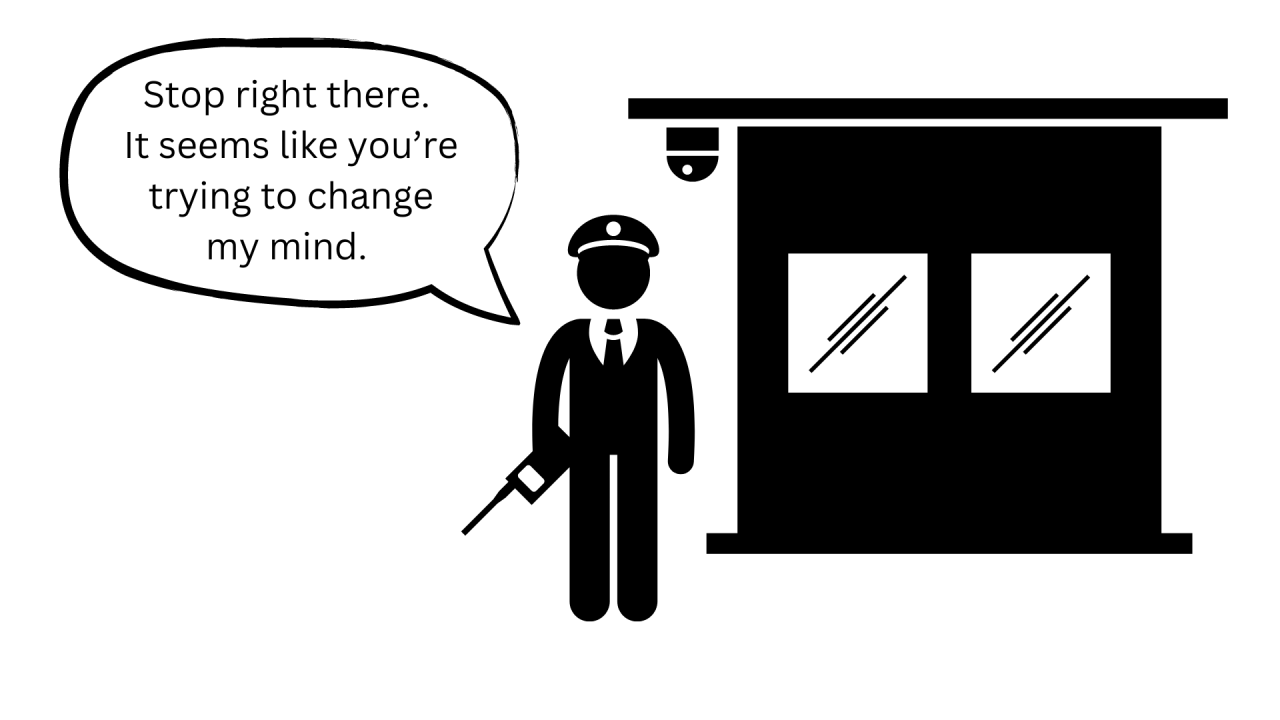Why is it so hard to change people's minds?
Did you know that people actively resist being persuaded? One of the reasons I’m so negative on the possibility of getting people to change their minds by presenting facts to them is because we all have what researchers call a persuasion sentry.
Like a guard stationed outside a military base, the persuasion sentry stands watch for attempts to change our minds and prompts us to respond with skepticism. Some of the things that attract the sentry’s interest are obvious, like pushy salespeople, political advertisements, or a family member trying to interest you in their multi-level marketing business. Thanks to the sentry, we instantly notice when someone is pushing us to do something in their interest, and not ours.
Some of the things that attract the sentry’s attention are unexpected. In our recent Journal of Consumer Behavior paper, my coauthors and I found that object emojis generate skepticism. Unlike facial expression emojis, which add emotional nuance to a message, object emojis don’t help you understand the message better. People recognize that those emojis further the interests of the company that created the marketing message, specifically to attract attention and get better reach from social media algorithms.
There are ways to sneak past the sentry, however. Observing other people’s behavior is one way we change our own actions. As support for same-sex marriage or marijuana legalization began to spread, it was normalized. And while people might have argued against those policies if someone tried to change their minds, when they observe the attitudes and actions of the people they are socially connected with, the sentry doesn’t see a thing. Social proof in marketing is a strategy to persuade without alerting the sentry.
Storytelling, also called narrative transportation, is another way to get past the sentry. In that case, we’re so busy following along with the story we don’t notice that we’re also taking in other details, like the storyteller’s point of view of what happened. Stories also tend to have a good and a bad guy, and we absorb the moral of the story even if it’s not pointed out to us. This is why marketers have taken up storytelling as a tactic in recent years.
Why are we like this in the first place? Humans are adaptable to an incredible variety of environments. Rather than evolving a rigid survival strategy the way animals do (build a web and eat insects or build a dam and eat fish), humans can adapt their behaviors to many different settings. Those behaviors are transmitted by social and cultural practices that evolve over time and are passed down to the members of the group.
But when you’re this adaptable, it’s important that once you arrive at a successful strategy, you stay on it. This is one reason that, as I’ve previously written, we evolved to enjoy gossiping about people who don’t do what everyone else does. We also needed to not be readily persuaded to change our strategy and the behaviors that underlie it.
If our distant ancestors had all been one conversation away from abandoning farming to take up hunting, or vice versa, we’d constantly have been in danger of starvation. It was important that change happen gradually and sustainably and carefully. That’s why the persuasion sentry steps in and reminds us to be skeptical.
The beauty of this system is that instead of one person being able to talk us into something new, it takes many many points of contact over a period of time. We need a consensus if we’re going to reject the status quo.
Of course the persuasion sentry isn’t always helpful. When we make choices as individuals or a society, they can have massive impact that we are slow to observe. Creeping dangers, like a sedentary lifestyle, eating too many hamburgers, or overusing natural resources pose a real danger, and waiting for a critical mass of people to change their behavior may be too slow of a response. A few lone voices armed with facts about these issues will not persuade us to change our behavior, no matter how many facts they have. Because the persuasion sentry is there, telling us all the reasons we should keep doing what we’ve been doing.
